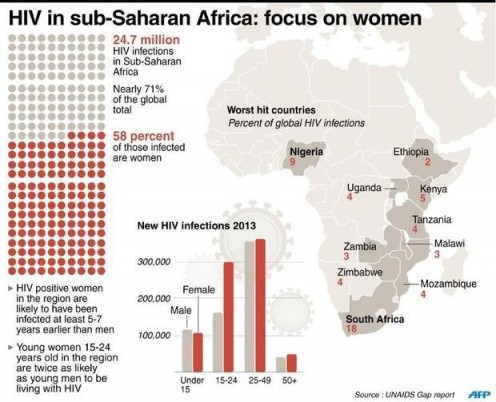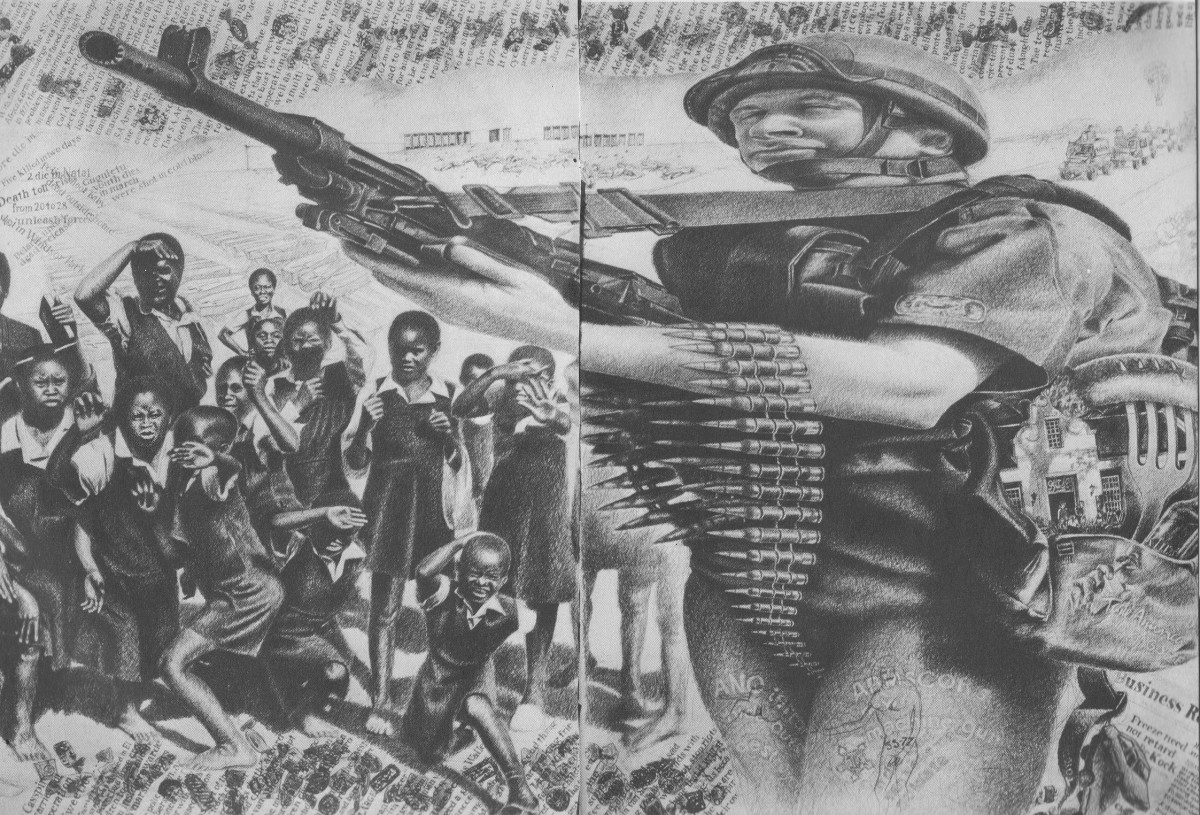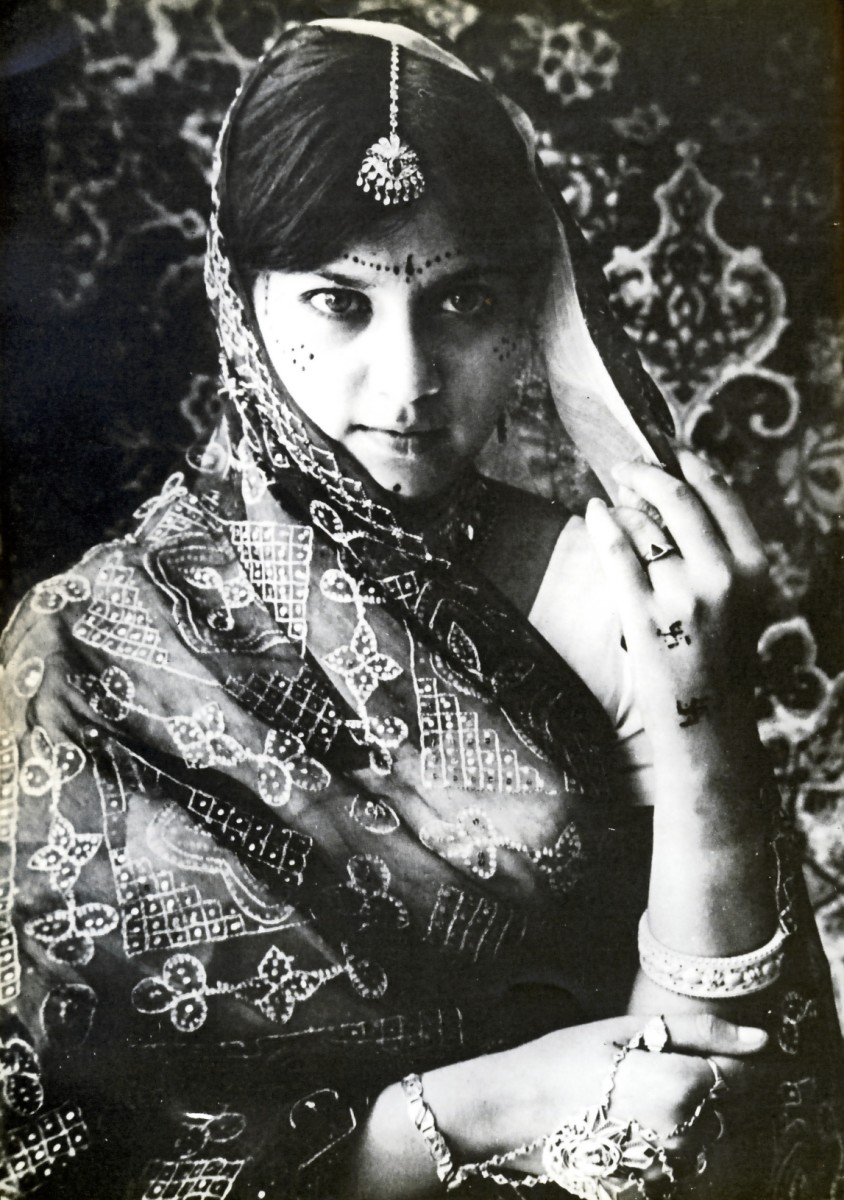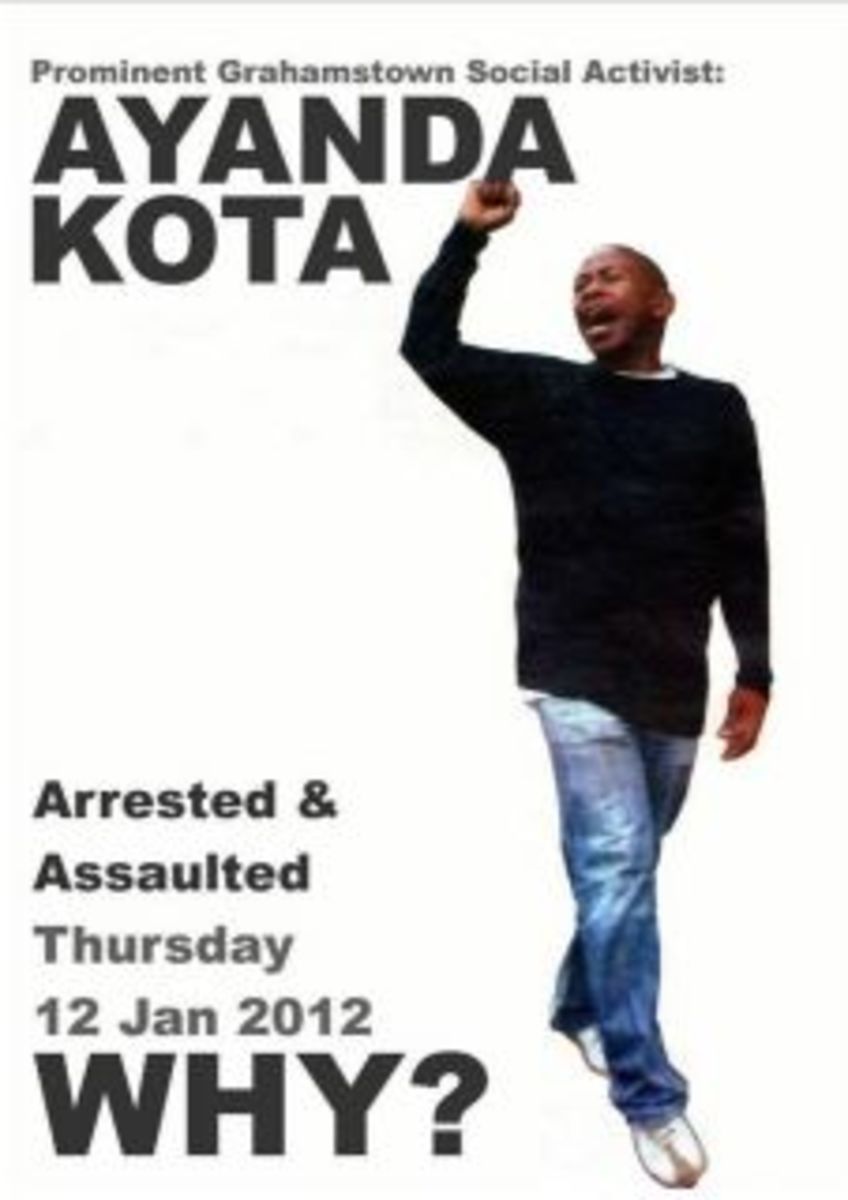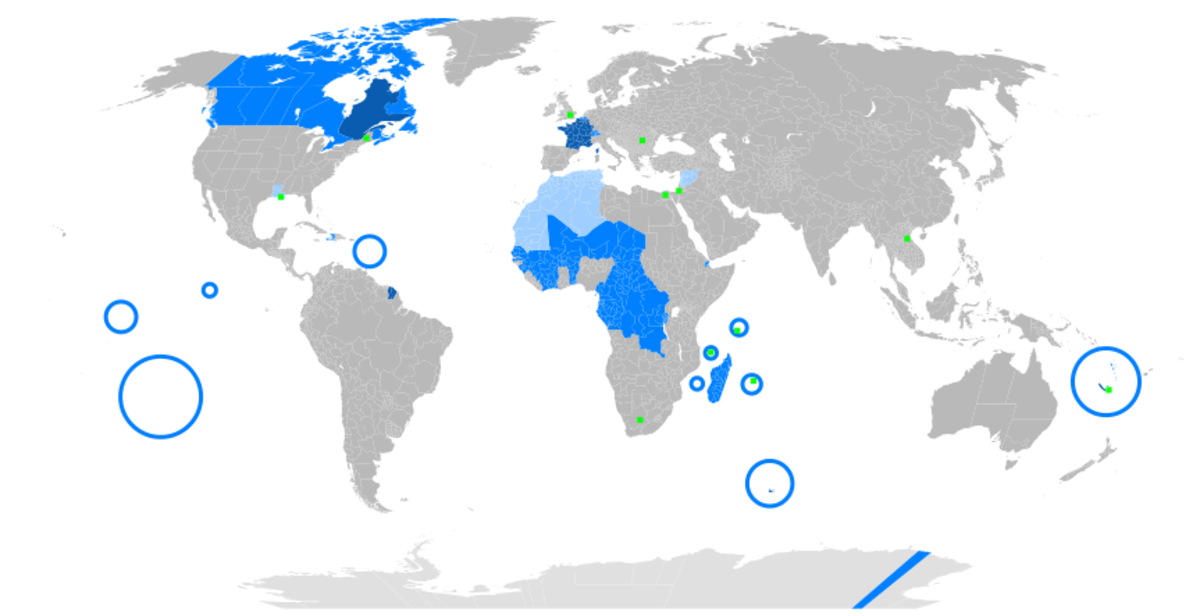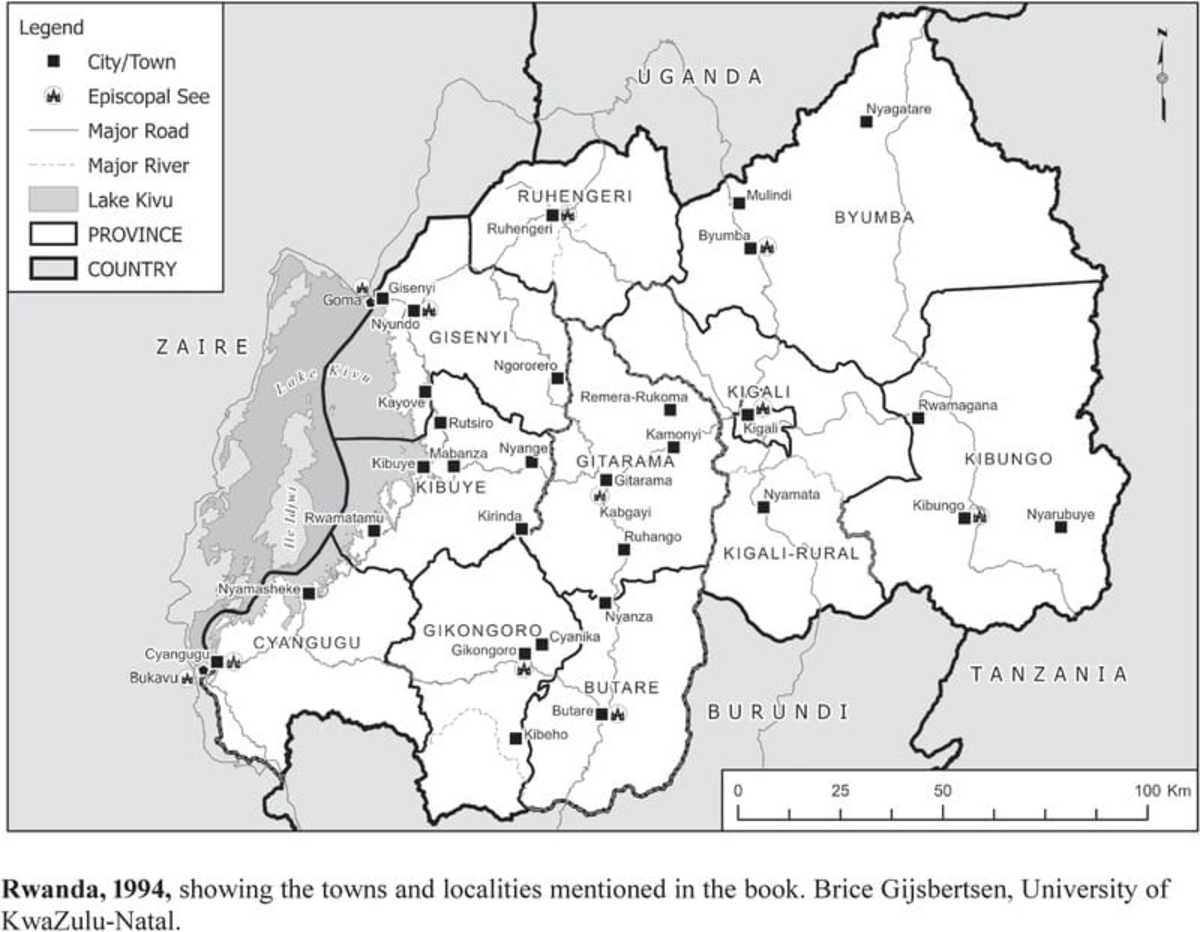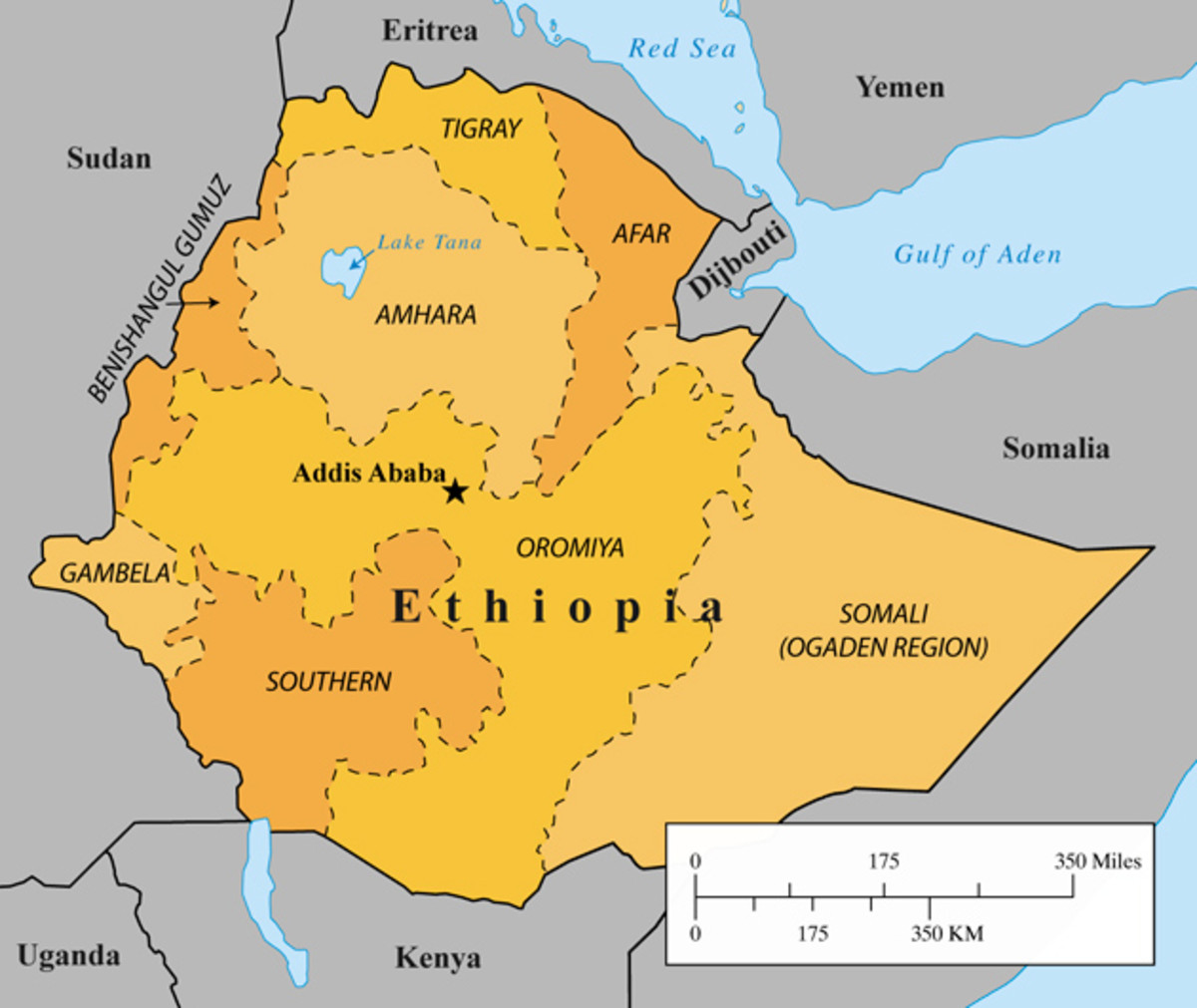Living and Dying with Aids in Africa
The Rise of AIDS and HIV in South Africa
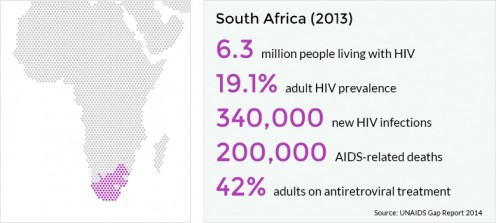
Living and Dying with AIDS in Sub-Saharan Africa
In today’s society, almost everyone knows about HIV and AIDS. It has become the disease of forced acceptance that is still shrouded by whispers and glares on the infected. Even though public fears are long from the 1980’s reports of the first reported cases in the United States, most individuals still treat HIV and AIDS as something to be feared. However, living with the disease in America is nothing compared to individuals that struggle with the disease in Sub-Saharan Africa. Sub-Saharan Africa is the leading region in the world for the AIDS epidemic and has become hidden from the rest of the world due to people’s lack of realization. Here in the United States, there are “currently over one million people living with HIV or AIDS,” but in Sub-Saharan Africa it is “estimated that there is 22.4 million people living with HIV in the region,” and the numbers are growing daily. (www.avert.org) To put the African AIDS pandemic in an even greater perspective, one must take a glimpse at the comparison of the death tolls between our two regions in 2008: the United States lost ½ million people to AIDS whereas Sub-Saharan Africa lost 1.4 million. (www.avert.org)
To just say that other countries, including the United States, don’t fully recognize the seriousness of the AIDS pandemic in Sub-Saharan Africa, you must first understand the full scope of the living situation there. First off, Sub-Saharan Africa, also known as Black Africa, is a region that consists of forty-seven different countries, including South Africa, Zimbabwe, and Nigeria (just to name a few). (http://web.worldbank.org) The African continent as a whole has a population of over a billion people as of 2009 and is the second largest continent, only to Asia. (www.wikipedia.org) With its great size and numerous amounts of people, one might assume that Africa would be a leader in both politics and economics. Unfortunately, one would assume incorrectly. As the “world’s poorest inhabitant continent,” Africa has struggled for hundreds of years to maintain a balance between their individual heritages and rituals and intercontinental relationships. (www.wikipedia.org) The region of Sub-Saharan Africa has been especially vulnerable to civil war struggles. Perhaps one of the most recent civil wars that were tied in the news to the AIDS pandemic is the Darfur Conflict. At one point officially called “genocide,” the Darfur Conflict was beyond a “humanitarian disaster.” (www.newsbank.com) “Over 200,000 people had died and more than 2.5 million had been pushed out of their homes” (as of March 2007) at the hands of brutal militia rebels that were at war against each other. (www.newsbank.com) During this 7 yearlong conflict, women and children were most vulnerable, with high reports of rape and murder. Even more disturbing was the militias’ lack of respect for the ill. In December 2008, the Darfur Conflict landed on the front steps of the United Nations-African Union peacekeeping operation. It was threatened by militia groups as it attempted to help African residents with issues, such as HIV/AIDS, rape trauma, and other ailments. (www.un.org) In America if you want to go to your doctor for HIV treatment, all you need to do is take your car or a bus and just go, but in Darfur, it’s not that simple. If you need treatment for HIV or AIDS, you have to take your already fragile life in your own hands and walk thru a war zone to get the treatment you need.
As you can see, living with HIV and AIDS in Sub-Saharan Africa cannot be compared to living in any other country in the world. Even though the percentages of infection varies throughout the many countries in Africa, the impact overall is the same. For instance, life expectancy was on the rise in Africa until AIDS hit in the 1980’s. With the dominance of HIV and AIDS, the “average life expectancy in Sub-Saharan Africa is now 47 years, when it could have been 62 without AIDS.” (www.avert.org) With such a major decrease in a person’s life expectancy, the overall economic structure of Sub-Saharan Africa has been affected, if not in some ways crippled. Imagine for a moment that your life was going to end at 47. Do you think by that age that you could get an education, have a family, provide for that family, and come to terms with your life? It is hard to imagine that most people would answer yes.
Unfortunately, in Sub-Saharan Africa, many have no choice but to answer yes to this question. Living and dying early from AIDS is extremely common, but this everyday occurrence has put more than a strain on the average African family. When a parent or an older sibling in the family becomes too ill from the disease to work, the family often will just go without that source of income. (www.avert.org) In addition, many families have to “provide home based care for sick relatives” preventing their ability to earn extra income. (www.avert.org) Loosing any amount of income in the average African household is more than just a strain, it is disabling. To have a member of your family also be terminally ill is like adding insult to injury. Once the individual loses their battle with AIDS, the family’s struggles often continue. If just one parent dies, the remaining is left to somehow earn that income to support the entire family. If both parents die, the children are left to become orphans and struggle to support themselves in an already impoverish region. “Since the beginning of the epidemic more than 14 million children have lost one or both parents to HIV/AIDS,” and many children have become infected also. (www.avert.org)
However, the regions of Sub-Saharan Africa are trying to take many measures to save their countries and their people. One major step that Africans are taking to ensure that they do not become a dying race is education. Although African schools are extremely modest when compared to American schools, children often look forward to a day of education out of the hot Sahara sun. The Africa nation has used that as an opportunity to educate their young about HIV and AIDS. Many studies have shown that young and inexperienced children are more susceptible to HIV and AIDS when they become sexually active since they do not use any protection and often have many partners. One statistic showed that as of 2007 most children (1.9 million roughly) were infected with HIV and AIDS by the age of 15 (in Africa), while approximately 1.5 million children of the same age were dying in that same year. (www.globalhealthreporting.org)
But Sub-Saharan Africans have not just stopped with educating their young about this disease. They have also taken to the dusty roads, to the savanna, and to the great Nile River herself with their messages of safe sex and prevention. It is in all these places where AIDS activists talk about prevention with the local African people. They start by first handing out free condoms. As a poorer continent, it is extremely important to provide to Africans a means of safe birth control and safe sex. If it were not for programs that allowed for the distribution of free condoms, the spread of HIV and AIDS would go even higher in Africa. “In studies carried out between 2001 and 2005, eight out of eleven countries in sub-Saharan Africa reported an increase in condom use.” (www.avert.org). This is also during the “distribution” of donated new condoms which in turn showed an increase in donations: “in 2004 the number of condoms provided to this region by donors was the equivalent of 10 for every man, compared to 4.6 for every man in 2001.” (www.avert.org). Unfortunately, the need for condoms, as important as safe sex is, is not the only problem that Africans have. If it were, it would be extremely cheap and easy to solve the AIDS pandemic over there.
Another sad and very unfortunate problem that faces the female population in Sub-Saharan Africa is breastfeeding. If a woman becomes infected with HIV or AIDS during or after her pregnancy, there is a great chance that she can infect her newborn child with the disease also. Many Africans do not have the ability to see a doctor or go to a medical facility that is on any level close to one that is in the United States, so there is often no way for a mother to take precautions against getting her child infected with HIV or AIDS. “Without interventions, there is a 20-45% chance that an HIV-positive mother will pass infection on to her child.” (www.avert.org) These facts are even more unfortunate knowing that the mother only needs to do is take an antiretroviral drug to reduce her chances of passing on the disease to her child. (www.avert.org) However, in most cases, these drugs are already expensive after health insurance coverage, and most Africans do not have the privilege of having health insurance. Luckily, there have been recent cases when celebrities and other famous individuals, such as Princess Diana and her sons, George Clooney, and former president Bill Clinton, have spoken out about the situation in Sub-Saharan Africa. Their public appearances have sparked increases in donations for AIDS relief in Africa, and some companies and institutions, such as the American Red Cross and the U.S. government, have become much more active in recent years in Africa’s fight against AIDS.
But all the donations of condoms, medicine, and money will do absolutely no good to the African people if they do not spend time and effort getting tested for the disease. Activists have been trying to teach their people that AIDS prevention is more than about using a condom or abstinence. It is about being informed. If you know that you are at risk at all of having the disease, whether it is because you have had unprotected sex or you have shared a needle with another person, you must get yourself tested. Sub-Saharan Africa has increased its ability to test its people on a mass scale. With a system called voluntary HIV counseling and testing, or VCT, Africans have increased their abilities to find out about their HIV status and receive treatment and care. (www.avert.org ) It is with VCT that an African can get tested for HIV and find out the same day if they are positive or not. This privilege is especially crucial in a region that is already overcome by a disease that is trying to kill its entire people.
Along with prevention, antiretroviral drugs, counseling, and early testing, the African nation has also used its size to its advantage in recent years to gain support for its cause. In 2010, for the first time in history, South Africa was the hosting nation of the World Cup Soccer Tournament. In the rest of the world’s eyes, this was just an amazing sport competition, but to all of Africa, especially South Africans, this was history in the making. This was a chance for a country and an entire continent to prove to the world that they could stand with the best. It also was a chance for Africa to improve on their economy through travel and tourism. In addition, South Africa and many non-profitable organizations used the 2010 World Cup as a chance to expose people to the severity of the AIDS situation in Africa. During the month long soccer tournament, it is “estimated 23,000 South Africans died from AIDS.” (www.avert.org)
Public awareness within its own region can sometimes be Africa’s biggest obstacle. Outside of trying to deal with civil wars between militia groups and educating the population about HIV and AIDS, Africa has been dealing with a much deeper issue called racial stratification since “the early 1800’s with White migration and settlement.” (Miller pg.247) Racial stratification is an extreme version of social stratification in which the issue of a person’s race is used to define and separate one group from another. This issue of separation became prominent during the era of “colonization and slavery.” (Miller pg.246) There are regions in Africa where racial stratification does not seem to appear, such as Nigeria and Rwanda. (Miller pg.246) The reason for this is simple: the population is almost 100% black. In contrast, the southern regions of Africa, South Africa for example, have a more mixed population of whites and blacks. Up until 1994, a practice called apartheid, “legally sanctioned segregation of dominant Whites from non-Whites,” was enforced in South Africa. (Miller pg.247) This racist view of thinking became harder for Africans to accept in 2003 after a young boy named Hector Peterson was killed during an “uprising against apartheid.” (Miller pg.247) Hector soon became the face of activists groups, such as TAC (Treatment Action Campaign) and “The Struggle Continues: Support HIV/AIDS Treatment Now,” as they fought for acceptance and civil rights in Africa. Certain civil rights where issued to blacks in South Africa after the end of apartheid. Voting became a whole new experience to black South Africans. Unfortunately, fear and racism still exists from Whites in South Africa. Dealing with such a major social issue as racial stratification has made it extremely difficult for Africans, especially the black South Africans, to help control the HIV/AIDS situation in their country.
There is also an outward struggle for many Africans to show the world that they truly need their help. When there is a major earthquake or a tsunami, countries flock to the struggling nation to help it pull their people from the wreckage. But when there is an entire continent full of a diseased and dying people, it does not appear that many want to help. Although AIDS is not your run of the mill natural disaster, it is still a plague to the human race that needs every country’s attention. It is estimated that the disease was first transmitted to humans between 1884 and 1924 in Africa, and then showed up in the Caribbean in 1966. (www.avert.org) HIV and AIDS is not like any other disease that humans have encountered before. It attacks the body in such a fashion that it destroys it completely from the inside out. Until scientists created antiretroviral drugs, an infected person’s life expectancy was not beyond a few years. Actually, most people went straight from being HIV infected to having full blown AIDS.
Understanding life in Sub-Saharan Africa is not easy. This much I understand. I’ve told you all about the daily struggles HIV positive Africans go through but to put words into pictures is difficult. During my research, I read an excerpt in a book that told a story of a young woman dying with AIDS in Africa. It talked about what it was like for her in her last moments, and the things she truly felt and worried about. She said: “When I’m alone, I start thinking about those who passed away and I’m scared for myself too. I don’t want this virus to destroy my life, I know I will survive.” (Fassin pg.229) She talks about leaving a “memory box” behind for her son and making peace with her family. (Fassin pg.229) Unfortunately, the reality of the situation rears its ugly head as the young woman “suffers from bouts of fever and diarrhea” as her body begins to give in to the disease. (Fassin pg.228) This all happens within a two year period as the young woman waits for antiretroviral drugs. (Fassin pg. 228) The year is 2004 when she dies. (Fassin pg.229)
Will all this said, one can see the seriousness of the daily struggle for the average Sub-Saharan African resident. Even if a person living in that region is lucky enough not to become infected by HIV, chances are that person knows a family member or friend who has the disease. There is also a great chance that the individual’s lifestyle is affected in some way by a person living or dying by the disease. Even though the AIDS relief for Africa is much better than it was 10 years ago, there is still a lot to be done on the continent. For a region with very little resources but many needs, it is hard to make a large dent in an infected population of 22.4 million people, especially when their population is growing as a whole. Seeing the enormous measures Africans have taken to battle AIDS is the first step to understanding the great lengths that still need to be taken to help save the Sub-Saharan Africans. The second step to understanding the true severity of this AIDS pandemic is admitting how little you truly know. They are a third world region without healthcare, without running water, and without electricity in several of their countries. They are a series of nations faced with burying 20,000 to 50,000 of their own people per month that die from AIDS. The fact is Americans just don’t know what it is like to truly live and die in suffrage with AIDS, but Africans do.
References:
· Miller, B. (2007). Cultural Anthropology, Custom Edition. Boston: Pearson.
· Fassin, D. (2007). When Bodies Remember: Experiences and Politics of AIDS in South Africa. Berkley: University of California Press.
· UNAIDS. (2009). Sub-Saharan Africa [Data File]. Retrieved from http://www.unaids.org/en/CountryResponses/Regions/SubSaharanAfrica.asp on July 25, 2010.
· Avert. (2010). HIV and AIDS in Africa [Data File]. Retrieved from http://www.avert.org/hiv-aids-africa.htm on July 25, 2010.
· The Henry J. Kaiser Family Foundation. (2008). U.S. Global Health Policy: People Living with HIV/AIDS (Adults and Children) 2007-2008 [Data File]. Retrieved from http://www.globalhealthreporting.org/diseaseinfo.asp?id=23 on July 25, 2010.
· Wikipedia. (2001). Sub-Saharan Africa [Data File]. Retrieved from http://en.wikipedia.org/wiki/Sub-Saharan_Africa on July 25, 2010.
· The World Bank. (2010). Resources for Countries: Africa [Data File]. Retrieved from http://web.worldbank.org/WBSITE/EXTERNAL/COUNTRIES/AFRICAEXT/0,,contentMDK:20226042~menuPK:258664~pagePK:146736~piPK:226340~theSitePK:258644,00.html on July 25, 2010.
· U.S. News and World Report (2007, March 12). To Jaw-Jaw Rather Than War-War? Crimes Against Humanity in Sudan; Ignorance and Fear Trump Kids' Health; The Human Cost of China's Boom Times. Retrieved from http://newsbank.com on July 25, 2010.
Seeing Is Beliving
